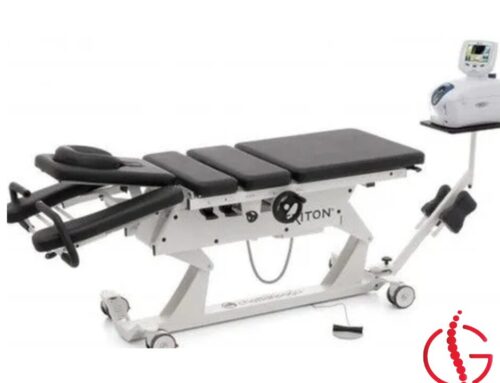Understanding Upper Cross Syndrome
As a chiropractor, I often treat patients with chronic neck pain, headaches, and upper back pain. Many of these cases involve postural distortions, particularly Upper Cross Syndrome[1]. Addressing these issues is essential for achieving a stable recovery. To help patients, we need innovative strategies. Patients must understand their conditions and how self-care can aid their recovery.

What is Upper Cross Syndrome?
Upper Cross Syndrome is a common postural distortion. It includes a combination of:
- Head Forward Posture
- Increased Thoracic Curvature (Kyphosis)
- Rounded Shoulders
These issues create muscle imbalances that can lead to significant pain. Relying on pain relievers like ibuprofen is not a long-term solution. Ibuprofen is not vitamin I. Persistent use of analgesics can be excessive.
One major challenge in treating Upper Cross Syndrome is thoracic kyphosis. Successful treatment requires improving mobility and achieving lasting motion. However, adjusting the thoracic area can be difficult, as these joints are challenging to retrain.
What Can you Do to Improve Upper Cross?
The Cross-Bench Pull over and Chin Tuck are the two most important exercises to start to prevent or improve upper-cross syndrome.
The Cross-Bench Pullover Exercise
One effective exercise for this condition is the Cross-Bench Pullover. Here’s how to perform it:
Setup
- Lie face-up on a bench, positioning your body perpendicularly.
- Use a solid dumbbell (do not use adjustable weights).
- Grasp the dumbbell with both hands, controlling one end of the weight.
- Your upper back should be supported on the bench, while your head and hips hang off the sides.
Movement
- Keep your elbows slightly bent.
- Slowly lower the weight behind your head while inhaling deeply. This helps expand your rib cage and drop your hips to maximize thoracic extension.
Return
- Lift the weight back to the starting position.
- Focus on your shoulder movement, allowing your clavicles and shoulder blades to move freely.
- Your elbows should remain stable, only ensuring the weight clears your face.
Repetitions
Start with a set scheme of 12 reps for 3 to 4 sets. Begin with lighter weights to master control and technique. Gradually increase resistance to enhance your stretch and rib cage expansion. Always prioritize control and avoid pushing to failure.
Why the Cross-Bench Pullover is Beneficial
The Cross-Bench Pullover is an excellent movement that complement the more popular training movements. It also had a hidden bonus- it engages the long head of triceps better than any other movement I’ve seen and is gets results toning the back of the arms. Don’t tell anybody, it’s our secret.
The Chin Tuck Exercise
In an effort to normalize your cervical spine as it sits upon your thoracic spine, push your chin towards your neck. You can use your fingers to help push back or simply use your neck muscles.

[1] Upper-crossed syndrome. Physiopedia. (n.d.). https://www.physio-pedia.com/Upper-Crossed_Syndrome
Disclaimer: The information provided in this article is for educational and informational purposes only and is not intended as medical advice. It is not intended to diagnose, treat, cure, or prevent any disease. You should consult a qualified healthcare provider before starting any fitness program or exercise regimen to determine if it is right for your needs. If you experience any pain, discomfort, or difficulty with any exercises described in this article, stop and consult your healthcare provider.
Performing exercises incorrectly or without proper supervision can lead to injury. The creators of this content disclaim any liability or loss in connection with the exercises and advice herein. By reading this article, you acknowledge that you are responsible for your own health and safety, and you voluntarily assume any risks of injury that may result from following the information provided.
Written by: Donaid Seals D.C
Dr. Seals is a practicing Doctor of Chiropractic with over 25 years of experience caring for people. His thinking is the product of his education, practice experience and many years in the natural foods and fitness industry. He has become living proof that old muscleheads don’t die-or fade away; sometimes they grow up to bring real-world expertise to the clinical picture. Traditional background information is available here.


